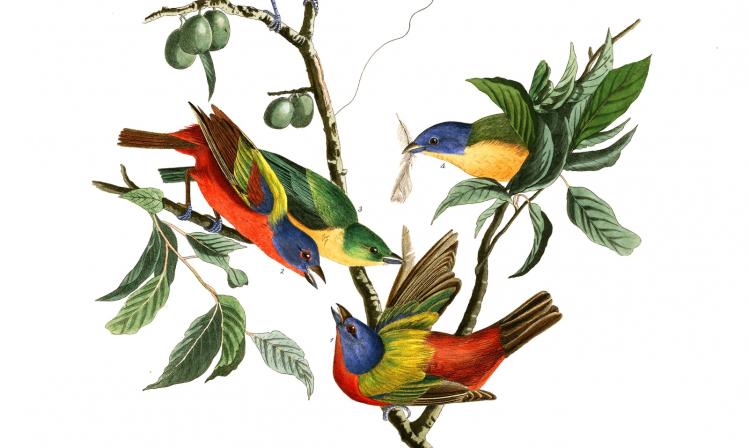
A few weeks after my four-year-old son’s emergency appendectomy, I notice how often he collects feathers. Toby finds dirty white herring gull feathers on the shore of the Saint Lawrence River, red iridescent cardinal feathers in our backyard, and striped brown-and-white turkey feathers on his father’s bookshelf. Feathers are a part of his play. He flaps them in the air and touches the tiny filaments with a finger and observes how they separate like hairs. He tapes a large feather to the handlebars of his bike; he says it will make him go faster.
After he goes to sleep, I empty his pockets of the detritus of the yard—bark, stones, a ring made from a twisted dandelion stem. With him so recently in mortal danger, I wonder if my husband and I have done enough to cultivate his spiritual life.
On the night he got sick, as my husband packed a bag to take to the emergency room, I lay beside Toby in his bed. The nightlight glowed a pinkish orange. Because he asked me to, I gently rubbed his hot, swollen belly; I sang a song about working in the garden. “Inch by inch, row by row, we’re gonna make this garden grow.” My voice rose and fell, turning a song about tilling land into a lullaby. We lay on top of the owl quilt his grandmother had sewn, his familiar room made strange by his pain and my fear.
To settle myself, I looked at the art my husband and I had hung on the walls during Toby’s infancy. Above my head, a photograph of a loon on a lake. When we camp, we hear the loon’s mournful calls but do not often see it. Next to the loon, a sketch of a red-bellied woodpecker on a trunk. We see it in the backyard pecking at the silver maple. On the wall near the foot of the bed, a reproduction of Audubon’s painted finches fluttering on and off a tree branch. Their green-gold, burnt orange, red, and blue plumage is more fantastic than the feathers of the finches who stop at our birdfeeder. Our son’s birds are not the mysterious birds of religion, not the dove aloft a few inches above Jesus’ hand. As my fingers circled his belly, I prayed and I told him angels would protect him. I said I loved him. “You love me even when I’m bad,” he reminded me. “Yes,” I said.
When Toby was still in the hospital recovering from his surgery, I went into his room again. Sun shone through the open curtains onto the rumpled bed. While gathering books to take to the hospital, my hand pushed aside Goodnight Moon and Stuart Little to find a small image of a guardian angel, a gift of his other grandmother. I had forgotten about the memento. Her hands hover above a pair of children; her wings provide shelter as they step across a narrow bridge of broken boards and branches lashed together with rope. Water rushes below and behind them. As I remembered the night Toby fell ill, I looked at her luminescent feathers with such gratitude. I set her again on the shelf. She did not seem out of place in this room of birds.
A few weeks later, Toby’s scars are still healing. We sometimes try to talk about what happened, but don’t get far. Over the next few days I sew pieces of fabric that I fold and fashion into feathers onto a t-shirt for him to wear in a play at his Catholic grammar school. He sings a song about Jonah in the belly of the whale while he builds with Legos. When I stitch by hand or run the fabric through the sewing machine, I think about angel wings, the dusky brown feathers of the phoebe building a nest on our porch. I think about what my son will say as he puts on the costume for the first time and touches the feathers I have sewn on his new owl’s breast.
Before dinner, we go outside again, and my husband and Toby collect fallen branches. We see a caterpillar crawling on a stick. What we find outside are physical manifestations of the holy, representative of the sloughing off of old skin, the salt of blood and the sea, signs of the divine. In nature we see examples of the shedding of what is no longer needed. Our son looks closely at a tree where the branch fell, touches the crisp, healthy wood beneath.
Please email comments to [email protected] and join the conversation on our Facebook page.
Share
Previous Story
Dangerous Disconnects?
Next Story
A Posada for Central American Migrants